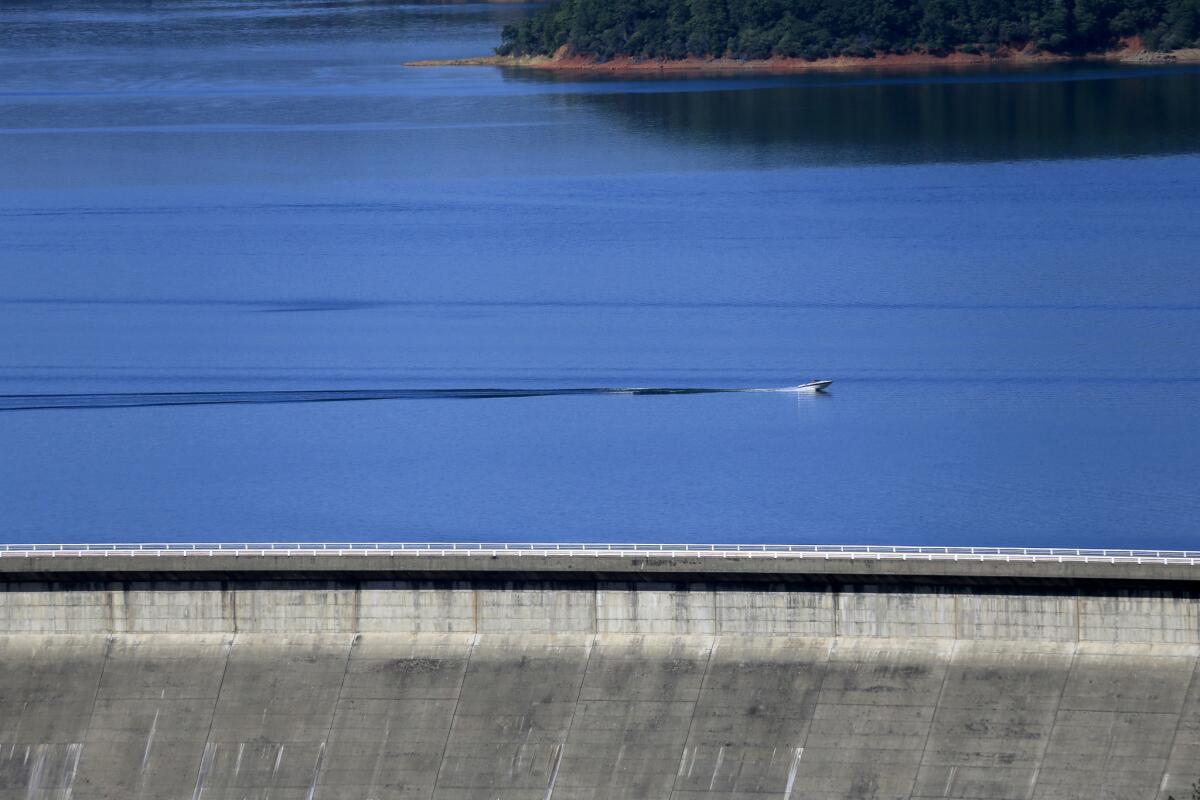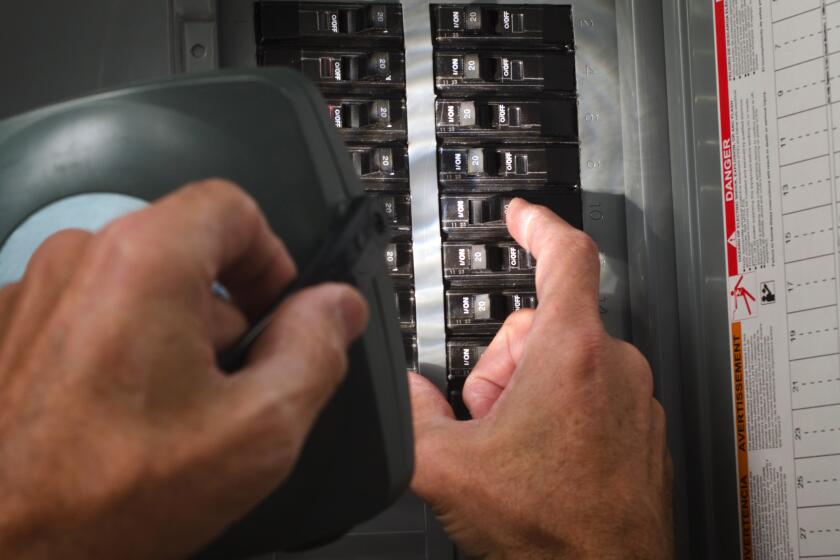Water conservation has saved energy, cut greenhouse gas emissions, study finds

As debate continues in San Diego County and around the state over how aggressively to conserve water amid a historic drought, a new study finds that reductions in urban water use have saved significant amounts of electricity and reduced greenhouse gas emissions.
The analysis, published by UC Davis, capitalized on the unique circumstances created by California’s drought. It culled statistics that electric utilities and water districts statewide were required to submit because of Gov. Jerry Brown’s unprecedented order for residents and businesses to lower water consumption by an average of 25%.
During Brown’s initial emergency conservation program that stretched from June 2015 through February, energy savings from water conservation totaled 922,543 megawatt-hours — enough to power 135,000 homes for a year, according to the data project.
See more of our top stories on Facebook »
The State Water Resources Control Board has reviewed the study’s findings, which were submitted to the agency as part of a contest meant to promote innovative uses of public data.
“The numbers were surprisingly large for those of us who have been in this field for some time now,” said Max Gomberg, conservation manager for the state water board. “I was pleasantly surprised at the magnitude of the action.”
The electricity saved from less water consumption was substantial enough that during peak summer months last year, savings equaled the effect of all energy efficiency programs offered by major investor-owned utilities in the state combined — and at less than a third of the cost.
“We were quite surprised when we looked at the numbers,” said Frank Loge, director of the UC Davis Center for Water-Energy Efficiency, which produced the new analysis.
“I think people have known this intuitively for a couple of years, but our analysis highlighted it,” he added.
The findings come as environmental groups and water managers have sometimes differed on how much conservation is needed, especially as new supply sources — including desalination plants, expanded reservoirs and water recycling programs — come online.
Water districts in San Diego County have cited these types of supply enhancements as they lobbied state regulators for nearly a year now to ease the governor’s conservation mandate. For example, they successfully emphasized that the Poseidon desalination facility in Carlsbad should significantly offset the need to curtail water use under current drought conditions.
Bob Yamada, director of water resources for the San Diego County Water Authority, said the UC Davis study doesn’t have much significance on the region’s water strategies.
“Energy use is not the driver of what we do,” Yamada said. “As a water supply agency, our primary responsibility is to supply this life-giving resource to our residents and businesses.
“Yes, when we have to sacrifice we will do it, but when we’ve invested in drought resilient supplies and water is available to meet our needs, then what we’re after long term is using water efficiently,” he added.
In contrast, water conservation advocates quickly seized on the UC Davis study as another reason to back greater water savings.
“One of the things this Davis report shows, which people in the water sector have known for a long time, is if you really want to get a handle on climate change, you can’t do it without water conservation,” said Bruce Reznick, executive director of Los Angeles Waterkeeper.
The energy savings from water conservation could likely be even higher than calculated because the study didn’t look at the electricity used to dispose of and treat water once it leaves homes and factories, Loge said.
“The actual energy saved is quite a bit greater than our analysis,” Loge said. “Our analysis is quite conservative.
“I think one of the biggest lessons for me and others in the state as we begin to think about the path forward is the real potential to invest energy efficiency money into water conservation,” he added.
Between July and September, major utilities provided incentives that reduced energy use by 459.4 gigawatt-hours at a cost of roughly $172.6 million — including through upgrades to appliances, lighting, and heating and air conditioning units.
Reductions in water use from homes and businesses during that same time cut the state’s energy use by 460 gigawatt-hours at a cost of $44.8 million – in part attributed to turf replacement rebates.
In 2014, the total power system for California generated about 293,268 gigawatt-hours, according to the California Energy Commission.
While Brown has rolled back his emergency drought regulations in response to winter rains and snow, state regulators now have the job of pursuing less aggressive but longer-term conservation standards.
According to new rules from the state water board, suppliers will issue their own caps on water use based on ensuring sustainable supplies under a scenario of three more years of drought conditions.
This has pleased water suppliers, who must grapple with fixed costs for maintaining pipes and other infrastructure regardless of dips in revenue associated with conservation efforts.
In repeated public meetings, water managers have voiced concerns about the effect of water cuts on home and businesses owners.
“I think that conservation has not come without sacrifice,” Yamada said. “I think that there’s been sacrifice across the region in terms of [people] letting their landscapes dry.”
Environmental groups, on the other hand, have criticized the state’s new more lenient approach, arguing that mandates to conserve have been almost exclusively beneficial.
“To have a program that’s wildly successful and then walk away from [it], what other sector would that happen in?” Reznik said. “What business that’s making money hand over fist would say now is a good time to walk away from that? It doesn’t make any sense.”
From June 1, 2015, through April, the water conservation program saved more than 423 billion gallons of water, leaving resources stored underground or in reservoirs.
ALSO
Black Lives Matter activist to be sentenced in Pasadena
Kardashians’ West Hollywood Dash store hit by would-be arsonist
California sees surge in Chinese illegally crossing border from Mexico
joshua.smith@sduniontribune.com
Smith writes for the San Diego Union-Tribune
More to Read
Sign up for Essential California
The most important California stories and recommendations in your inbox every morning.
You may occasionally receive promotional content from the Los Angeles Times.






